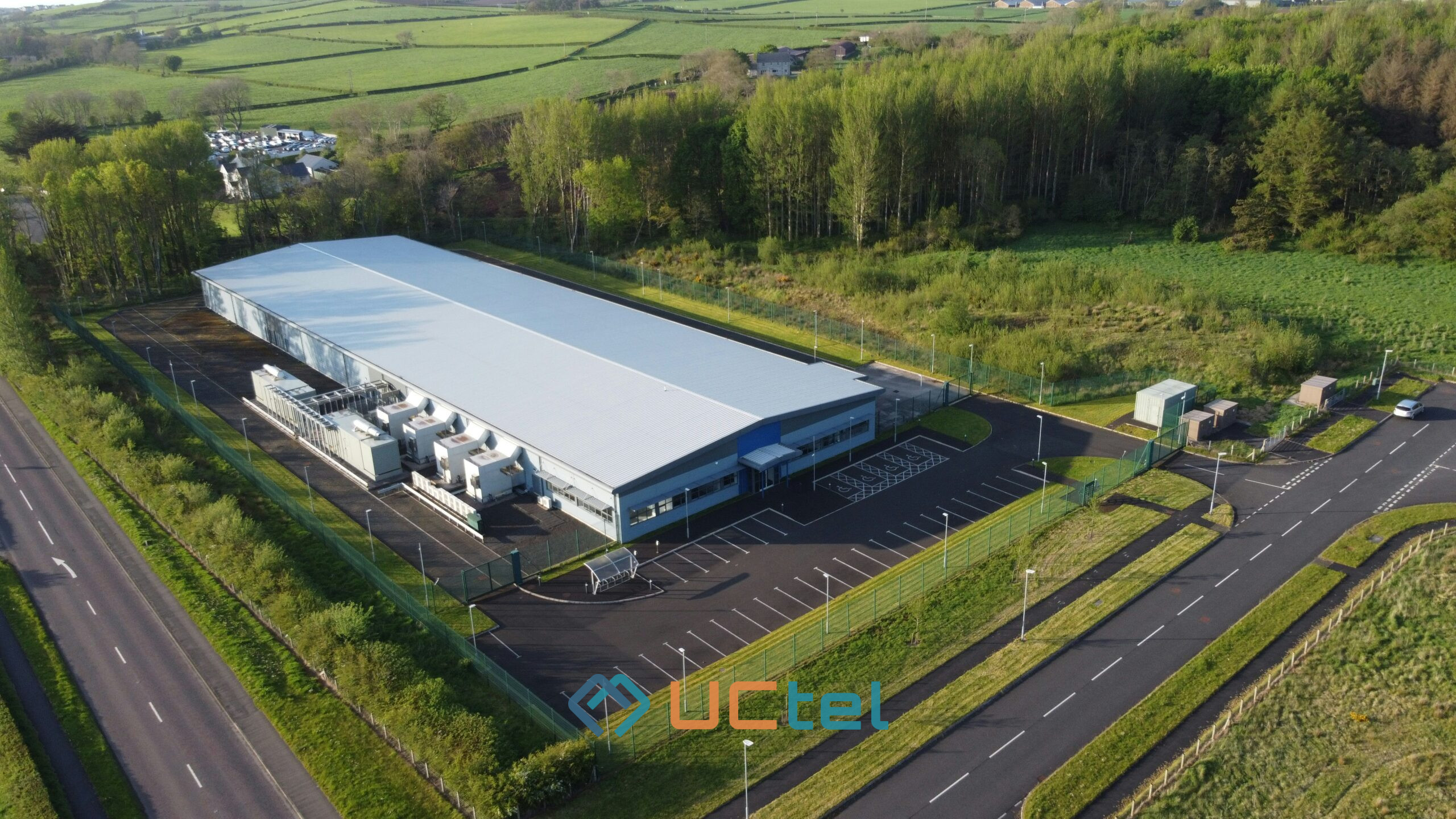
2G Switch Off in the UK: What You Need to Know
Table of contents
If you are an avid 2G user, perhaps you’ve already received an SMS alert from your mobile service provider about the network closure by 2033, affecting several devices depending on 2G networks for communication. As a small business owner, you must know what to expect and be prepared to adapt your business to a new change. In this blog post, we will be exploring the 2G shutdown, what service providers will be influenced by the 2G network switch-off, and what can be a decent substitution for the network.
Why are Providers Switching Off Their 2G Networks?
Before we talk about the end of 2G, let’s define what it means. 2G stands for the second-generation mobile phone network technology that was launched in the 1990s. 2G is used for digital voice calls, text messaging, and basic data services such as email and browsing.
One of the major reasons for the shutdown is that 2G just can't cope with the number of sophisticated mobile technologies available. With so many people now using smartphones, the demand for data is greater than ever before, and 4G and 5G offer faster speeds, more reliable connections, and better coverage. Simply put — 2G simply can't cope with this demand and consequently is becoming obsolete. By switching off 2G, providers can concentrate on designing and improving their newer networks.
Which Providers Will Switch off the 2G Network?
So, which providers are going to shut down their 2G networks? We know for sure that those are O2 and Vodafone. For now, though, none of the major operators UCtel works with has proceeded with a 2G switch-off in the UK. Still, we know that the switch-off of the 2G connection for most operators will occur at the end of this decade, after they shut down the 3G.
For once, the UK government has received confirmation from mobile network operators that they have no plans to continue providing 2G mobile networks beyond 2033.
Exploring Who is Affected by the 2G Network Shutdown
Basic Communication Services
Basic communication services, including voice calls, messaging, and data services, will experience the negative impact of the 2G network shutdown first-hand. Hence, a big blow will be inflicted upon people who rely on access to 2G network services, especially those found in developing countries. For some people, accessing 2G networks is their only option because of its affordability and availability; after the shutdown, they will go for more expensive options.
IoT and M2M Devices
IoT and M2M technology are two areas most affected by the 2G network shutdown in the UK. These devices rely on low-power and low-cost connectivity, making them incompatible with the new 4G technology. This incompatibility means that these devices lose their connectivity, thus making them useless. The discontinuation of services also has a significant impact on companies that provide IoT services, as they have to re-engineer their systems, which comes with massive investments, in addition to a significant loss of revenue.
Emergency Services
Security services and health care systems will also have a harder life after 2G discontinuation. Upon the shutdown, these services will lose their only available communication lines. The impact of a 2G network shutdown will reflect on their response timeline, which is a crucial aspect of emergency services. The slightest delay in communication can lead to severe consequences. The switch-off of 2G networks, therefore, has a ripple effect on the safety and well-being of the communities affected.
Rural Communities
Rural communities rely on basic communication services, such as voice calls and messaging, to a great extent. This reliance on 2G phone networks is pervasive in areas where other communication services are either costly or unavailable. Expectedly, the 2G network shutdown will affect the livelihood of people in these rural communities. With no means of communication, people in rural areas might lose the opportunity to access basic emergency and healthcare services.
Taking a Look at Your Ongoing 2G Signal Booster
Assess Your Connectivity Needs
The first step to improving your network connectivity is to assess your needs. Does 2G still work in the UK for your operator? How many people will be using the network? What types of devices will they be using? What activities will they be performing? Only after that can you move to the next steps.
Identify Compatible Networks
Once you have gauged your connectivity needs, the next step is to find compatible networks. In most cases, you may be presented with a choice of multiple network carriers such as EE, O2, Vodafone, or Three. Each network has its own coverage, signal strength, and data rates that need to be checked against each other to determine the best match for your business. You also need to determine if your 2G signal booster is compatible with the respective networks you have chosen. Some boosters only work on certain network frequencies and technologies.
Upgrade to 4G/5G-Compatible Devices
As network carriers are replacing their 2G and 3G services with 4G and 5G, simply upgrading your devices won't cut it anymore. Older phones, tablets, and laptops might not have the latest network technologies, so you will be stuck with old phones that don't support these newest network technologies. You really need to purchase newer generations of phones that take advantage of faster and more reliable networks. You also must make sure your 2G signal booster can handle the newer technologies. Some boosters were only conceived for 2G and 3G and may not work with 4G or 5G networks.
Implement Network Transition Plans
If you're switching to a new network carrier or upgrading your signal booster, make sure you have a transition plan. This should outline what steps you need to follow so that no disaster strikes during the switch-over process. You could include scheduling downtime or maintenance windows and transferring data and settings from your old devices to the new ones.
Test and Optimise New Network Connections
Once you implement your new network infrastructure, you should test and optimise it to ensure the infrastructure is performing as expected. You can use various diagnostic tools such as speed tests, signal meters, and network analysers to measure how well your connections are working or what they’re lacking in terms of quality and reliability. You can also change the settings on your networks so that these optimisations are based on the needs of your business. You may need to do some of these tests and optimisations periodically so that your net seems to be adapting to changing patterns of traffic demand.
Provide Training and Support
You have to train and support your employees so that they can really take advantage of your new network infrastructure. Not everybody is technology-savvy, nor are they techs who can troubleshoot connectivity issues alone. You need to implement training programs, user manuals, and support hotlines so that your employees become proficient at using the new devices and tools. You also have to monitor their feedback and complaints and address them promptly and professionally.
Monitor and Adapt to Changing Technologies
Technology is improving constantly, and you need to track the latest trends and innovations to remain on par with the competition. Keep an eye on the market for new network technologies, devices, and services that can enrich your business capabilities. You need to change your infrastructural provisions in order to accommodate the diverse changing needs and expectations of your customers or employees. You may also have to upgrade or replace your 2G signal booster periodically so as not to break down after some time, while maintaining your network performance and reliability.
Contact UCtel to Avoid Problems with 2G Network Shutdown
If you are still relying on a 2G signal booster, then it is important to act fast if you want the expected shutdown not to compound matters. Contact UCtel today for more details on our advanced signal boosters and network solutions. Our professionals will assess your connectivity requirements to select the most cost-effective option for boosting your network.
Final Thoughts
So, is the 2G network still available in the UK? The closure is most likely to happen after the 3G switch-off. Even though there is no specific date, the MNOs are expected to stop offering 2G and 3G services beyond 2033. Get ready to adapt your business landscape to the change and always stay in touch wherever you go. We hope this post was helpful, and that you found some answers to your question “When is 2G being turned off in the UK?” Book an appointment with UCtel right away for more information on how we can help you stay connected in the rapidly changing business environment.





